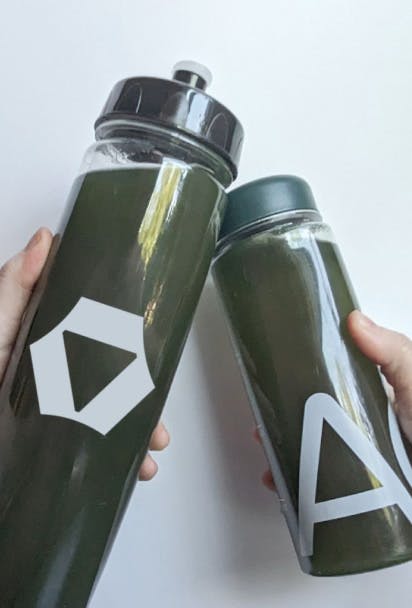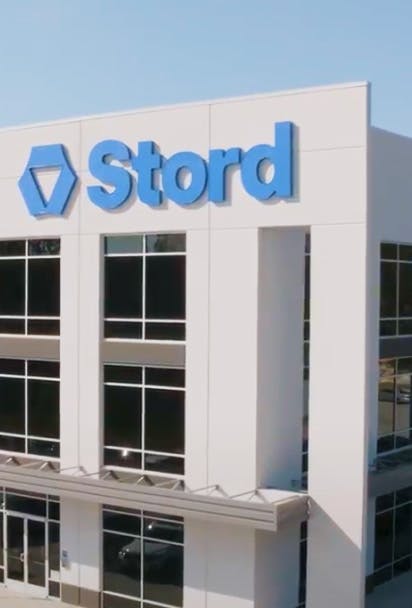E-commerce made up less than 1% of all retail sales at the turn of the 21st century. By 2020, it surged to 10%. Four years later, it grew to account for more than 16% of all retail sales in the U.S.1.
This growth wasn’t without its challenges. E-commerce brands had to adapt in real time to disruptions. The COVID-19 pandemic accelerated the shift to online shopping almost overnight, forcing many brands to develop a decade's worth of e-commerce acumen in just six months. Meanwhile, inflation sent fulfillment costs climbing across the board. Fuel prices spiked, driving up transportation expenses. Warehouse costs jumped by over 8%2. And during the Great Freight Recession (GFR), over 85,000 trucking companies shut down3.
More upheavals are underway as we head into Q3 2025. The U.S.-China trade war triggered higher tariffs and import taxes4, impacting sourcing and cross-border fulfillment. USPS overhauled its Parcel Select program, raising average rates by 25%5 and shifting volume to centralized sortation centers6, rendering parts of existing delivery infrastructures obsolete. And changes to IMMEX have introduced fees that eat into margins7.
E-commerce has become more volatile, more expensive, and more complicated than ever before. And the “Amazon effect” has only made buyers harder to win over and even harder to retain. Over 85% of consumers say brands failed to meet their expectations at least once in the past year because of late deliveries and excessive shipping costs8. Online shoppers don’t care about the challenges your brand is facing. Without exception, they continue to expect an excellent consumer experience every time they interact with your brand. So unless you offer better products, eliminate out-of-stock issues, improve messaging before and after purchase, optimize checkout, guarantee faster and free shipping, provide real-time order tracking, and simplify returns options, consumers will always choose to purchase elsewhere.
To ensure brand loyalty and a winning consumer experience, you need more than the status quo. You need a flexible and reliable commerce enablement solution—one that helps your brand stay prepared, maintain consistency, and leverage real-time data to scale through any disruption.
The Power of Preparation
Being able to deliver the ideal consumer experience every time despite rising costs, shifting policies, or fulfillment challenges starts with preparation. The brands that stay ahead are the ones that build flexibility into their fulfillment strategies.
One way to do that is by partnering with a fulfillment provider that can tap into a shared network of distributed infrastructure already built to support inter-state, national, and cross-country fulfillment. More than geographic reach, shared networks provide operational readiness, allowing you to activate warehousing, fulfillment, and transportation without starting from scratch.
We’ve seen this need for agility play out in real time as amendments, such as changes to IMMEX, have created new challenges in fulfillment.
Sean goes into detail about the IMMEX modifications and more in his Q1 2025 keynote, but here’s a snapshot of the key changes:
These changes created pressure for brands to respond quickly. But those prepared with flexible fulfillment strategies and access to a shared, distributed network were able to pivot instantly.
When True Classic was impacted by IMMEX import changes, Stord acted fast—launching a new fulfillment hub in Kentucky and getting outbound products moving in just 19 days from signature, with zero delays.
Another example is the USPS pricing and service changes:
Here’s more on what that means:
Parcel Select saw a 9.2% rate increase, with last-mile unit entry costs rising over 10%11.
The price for USPS Ground Advantage (Retail) went up by 4.9%11.
Deep Drop Unit (DDU) rates proposed hikes ranging from 23% to 70%12.
USPS stopped offering discounts to consolidator carriers like UPS SurePost13.
Delivery takes 1-2 days longer as USPS leans on ground transportation to cut costs14.
Consolidators are losing control over customer shipments as parcels get pushed further upstream in the USPS network15.
Brands with fulfillment strategies unprepared for such changes were left with rising costs and slower deliveries. This hits hard on consumer expectations as more than 90% of online shoppers will abandon their cart if they encounter high shipping costs16, and 1 out of 4 won’t buy from your brand again after a single delayed delivery17.
Here’s how Stord helped brands navigate these changes without compromising the consumer experience:
Preparation starts with the right partner. The brands that win during times of change are those that have built and partnered with providers who can quickly adapt to any seen or unseen changes in the market.
The Power of Consistency
While reacting fast is critical, brands can’t succeed if they are in a constant state of fire drills. Long-term e-commerce success comes from building systems that deliver speed and savings without daily firefighting. What you need is an enablement and fulfillment system that’s fast, flexible, cost-effective, and above all, consistent.
But you can’t be consistent if you don’t know what “great” means. You have to start with a clear benchmark. Here’s what best-in-class e-commerce enablement looks like by the numbers:
While the industry benchmarks are already decent, brands that partnered with Stord experienced better on-time delivery performance, higher order accuracy, and shorter order cycle times. This is the standard level of service you must consistently deliver to your customers for every order, without fail and without exception.
Take, for example, Alen Corporation, an Austin-based company known for its award-winning HEPA air purifiers. As demand for clean air surged, Alen faced growing pressure to scale quickly. With Stord’s integrated e-commerce enablement platform, Alen transitioned to a scalable, tech-enabled fulfillment solution that kept pace with growing order volumes and seasonal spikes. The case study explains how Alen reduced lead times by 80% after partnering with Stord. Even as demand for air purifiers continued to increase, they still shipped faster than before—and they’ve consistently maintained that speed ever since.
This is what consistency looks like when done right. It’s about continuing to deliver, no matter what. In e-commerce, every order is a promise. The brands that win are the ones that keep that promise—again and again—with the right systems and partners behind them.
The Power of Data
The brands that stayed resilient from 2020 to 2024 weren’t just the ones with the most inventory or the biggest fulfillment networks. They were the ones who could see what was happening in real time and move accordingly. These brands had access to the right data at the right time.
With data seamlessly flowing through a fully integrated e-commerce fulfillment network, your brand gains the visibility it needs to stay in control. Inventory levels stay accurate across all platforms. Estimated delivery dates (EDDs) are instantly calculated based on the closest fulfillment provider and automatically updated when unavoidable delays occur. And every parcel’s location is tracked in real time, keeping you and your customers always informed.
This level of visibility pays off when disruptions strike—like in early 2023, when a winter storm caused widespread carrier delays in the Northeast18. Brands that could see the impact across their fulfillment centers and customer delivery zones adjusted immediately by rerouting orders, updating delivery windows, and communicating proactively with customers. Others didn’t realize the problem until complaints started flooding in.
Another example is when severe port congestion hit California mid 2024. A 37% spike in on-dock volume caused nearly half of all containers to experience dwell times more than twice as long—jumping from an average of 4 days to over 919. For brands relying on that corridor, fulfillment timelines fell apart. Here’s how data can be used to solve a major dwell time issue:
Overcome Change While Continuously Winning
In a volatile e-commerce environment, we have to assume that anything that can go wrong will go wrong. Margins are tight, competition is unforgiving, consumer expectations are higher than ever, and the cost of being unprepared isn’t just high—it’s compounding.
To overcome change and keep winning, you need a flexible, end-to-end e-commerce fulfillment and enablement system that can keep you agile. One powered with the best-in-class technology that can scale without breaking.
Customers don’t see the internal challenges you overcome. They see a brand that delivers on time, every time. That reliability, even in the face of change and uncertainty, is what earns trust and drives repeat conversions. In today’s dynamic environment, the brands that win are the ones that prepare, adapt, and move forward—no matter what’s around the corner







